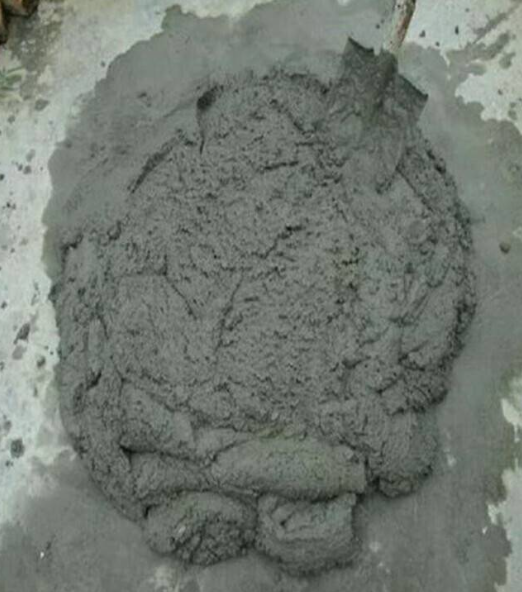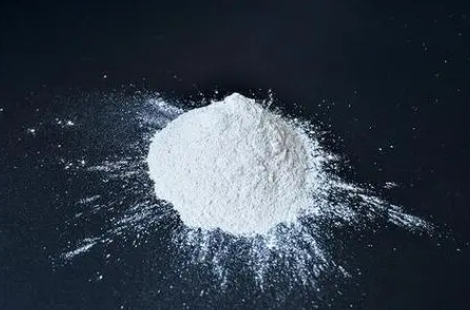
7. Influence of mixing time and mixing speed
The mixing time has a relatively direct impact on the content of concrete and the dispersion effect of concrete admixtures on concrete, and indirectly affects the workability, mechanical properties and durability of concrete. If the mixer runs too fast, it is easy to damage the colloidal structure in the cement and the double electric layer membrane on the surface of the cement particles, which will eventually affect the setting time and slump of the concrete to a great extent. The mixing speed needs to be controlled within 1.5-3 minutes. If the dry mixing method is used, the concrete can be mixed evenly by using the water reducer reasonably. If the solution needs to be added, the water needs to be deducted from the mixing during the configuration of the water reducer to ensure the rationality of the water-cement ratio design. In order to ensure the slump of the concrete and give full play to the role of the water reducer, the post-mixing method can be used directly. Different from the high-efficiency water reducer addition method, the ease of mixing of the concrete can be ensured by using the post-mixing method reasonably. If a mixer truck is needed to transport concrete, the water reducer can be added to the mixer truck 2 minutes before unloading to reasonably increase the mixing speed of the mixer truck and improve the discharging effect.
8. Impact of ambient temperature and humidity
The setting time, hardening speed and early strength of concrete mixtures are directly related to the curing temperature. After adding the water reducer, this phenomenon is more obvious, and the effect will be more significant when the setting time is below 20 degrees Celsius. Generally speaking, the higher the temperature, the faster the cement hydration rate, and the faster the evaporation rate of the concrete surface will be. The free water inside the concrete will be continuously added to the concrete surface through the capillary, further accelerating the hydration effect of the cement. The free water in the concrete is evaporated and reduced, which further causes the slump loss of the concrete. In addition, the retarding effect of some concrete admixtures will be greatly reduced above 30 degrees Celsius. Therefore, if it is necessary to operate in a high temperature environment, it is necessary to reasonably increase the amount of concrete admixtures to effectively avoid the occurrence of water evaporation. Wood calcium has a certain slow setting property. It can only have a certain structural strength after pouring for a long time. During the maintenance operation, it is necessary to extend the static stop time sufficiently and scientifically design the dosage. Otherwise, the concrete is prone to serious cracks, surface looseness and bulging during use. In the process of using high-efficiency water reducer, due to the relatively low air entrainment, the slow setting effect cannot be guaranteed, and too long static stop time is not required during the steam curing process. Therefore, in the process of adding admixtures, relevant maintenance work should be done carefully to avoid serious water evaporation during the maintenance process.
9. Cement storage time
Under normal circumstances, the shorter the storage time of cement, the fresher it will appear, and the worse the plasticization effect of cement will be. The fresher the cement, the stronger the positive charge, and the more ionic surfactants it adsorbs. For cement that has just been processed, its water reduction rate is low and the slump loss is fast. For cement with a long storage time, these problems can be well avoided.

10. Alkali content in cement
The alkali content also has a very direct impact on the adaptability of cement and water reducer. As the alkali content of cement increases, the plasticizing effect of cement will deteriorate. When the alkali content exceeds a certain range, it will also have a very serious impact on the setting time and slump of cement. In addition, the form of alkali in cement also has a very direct impact on the use effect of water reducer. Under normal circumstances, if the alkali exists in the form of sulfate, its effect on water reducer is less than that in the form of hydroxide.
11. Gypsum in cement
By adding cement gypsum to cement, the hydration of cement can be greatly delayed, and direct adsorption of cement and water reducer can be avoided, thereby effectively improving the adaptability of cement and water reducer. According to a large number of studies, after adding a certain amount of gypsum to cement, the adsorption of water reducer on cement mineral C3A can be effectively reduced. This is mainly because gypsum and C3A can react to form calcium sulfonate, which will directly cover the surface of C3A, avoiding further hydration of C3A, which can greatly weaken the adsorption of C3A particles on water reducer. Different types of gypsum have different dissolution rates and solubilities. The type and content of cement gypsum have a very direct impact on the adaptability between cement and water reducer. The pore fluid sulfate in cement concrete mainly comes from the sulfate formed by silicate cement, which will have a very direct impact on the cement hydration reaction and the workability of silicate cement concrete. The sulfate ions in gypsum often undergo different changes during the grinding process. If the temperature of the grinding process is high, the dihydrate gypsum will be partially dehydrated and form hemihydrate gypsum. If the temperature inside the mill is too high, a large amount of hemihydrate gypsum will be formed in this process, which will eventually lead to the occurrence of cement pseudo-setting. For cement with relatively less alkaline sulfate components, under the strong adsorption of sulfonic acid-based water reducers, it will directly cause the concrete slump to drop very quickly. When the soluble sulfate content increases, the adsorption of high-efficiency water reducers will show a quasi-linear downward trend.
12. Cement grinding aids
The cement grinding effect can be greatly improved by using cement grinding aids reasonably. In the process of cement production in many foreign cement companies, grinding aids are often used in large quantities. In recent years, after the implementation of new cement standards in my country, the requirements for the strength and fineness of cement have been improved, which has put forward higher requirements for the use of grinding aids. At present, there are many types of cement grinding aids, and the number of grinding aid manufacturers in my country is also showing a trend of continuous increase. Various cement grinding aid manufacturers have continuously invested in the research and development of economical, efficient and easy-to-use grinding aids. However, some grinding aid manufacturers pay too much attention to production costs and invest relatively little in the research of grinding aid performance, which has a very adverse effect on its use effect: ① The use of substances containing halogen salts is likely to cause the corrosion of steel bars inside concrete. ② The use of too much lignin sulfonate leads to a relatively serious problem of incompatibility between cement and concrete admixtures. ③ In order to effectively reduce production costs, a large amount of industrial waste is often used, which has a very adverse effect on the durability of concrete. In the current concrete production process, the alkali and chloride ion content, gypsum type, and clinker minerals have a very direct impact on the distribution of cement particles. In the use of grinding aids, the durability of cement cannot be sacrificed. The composition of grinding aids is relatively complex. Only by using grinding aids reasonably can the effect of concrete be guaranteed. During the production process, grinding aid manufacturers should have a comprehensive understanding of the company’s grinding process, and master the types of grinding aids and cement particle grading.
13. Construction mix ratio
The construction mix ratio belongs to the engineering design problem, but it has a very direct impact on the compatibility of concrete admixtures and cement. According to relevant data, if the sand ratio is too high, it is easy to cause the fluidity of the concrete mixture to decrease, and the slump loss is very large. In addition, the shape, water absorption and grading of the stones in the concrete mix ratio will also affect the construction, water retention, cohesion, fluidity and formability of the concrete to a certain extent. Relevant experiments show that by reducing the water-cement ratio, the strength of concrete can be improved to a certain extent. Under the condition of optimal water consumption, the various properties of cement concrete can be fully utilized, so that its plasticity can be fully improved, the concentration of admixtures can be guaranteed, and the compatibility of admixtures and cement can be improved.
Media Contact
Company Name: Shandong Jufu Chemical Technology Co., Ltd.
Email:Send Email
Address:Bld. 4-1001, No. 2177, Tianchen Rd., Jinan
City: Shandong
Country: China
Website: https://www.jufuchemtech.com/
